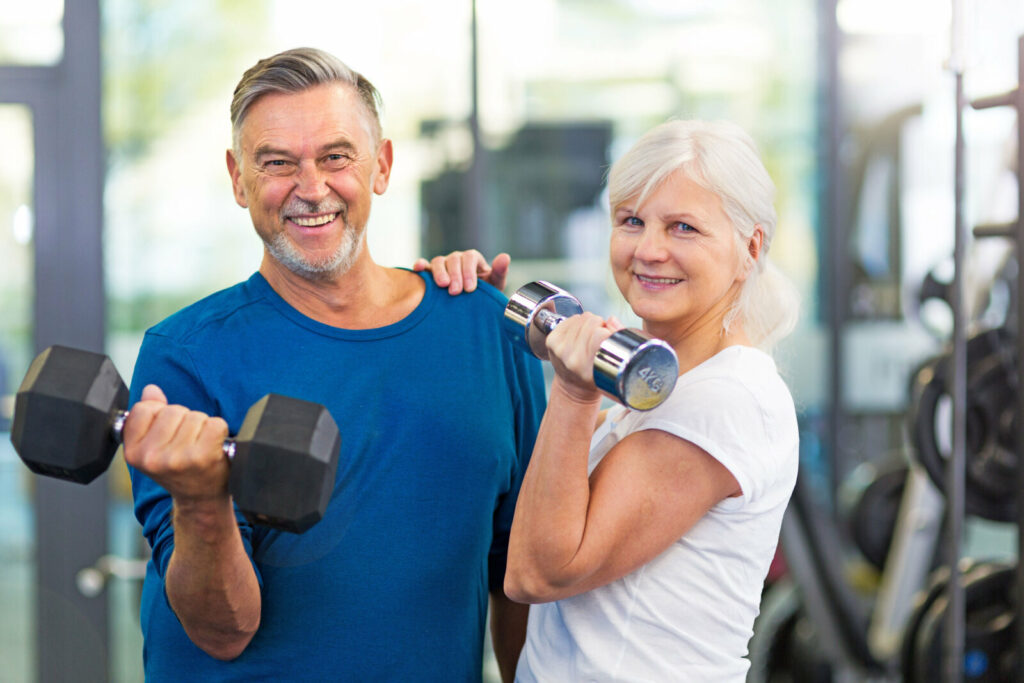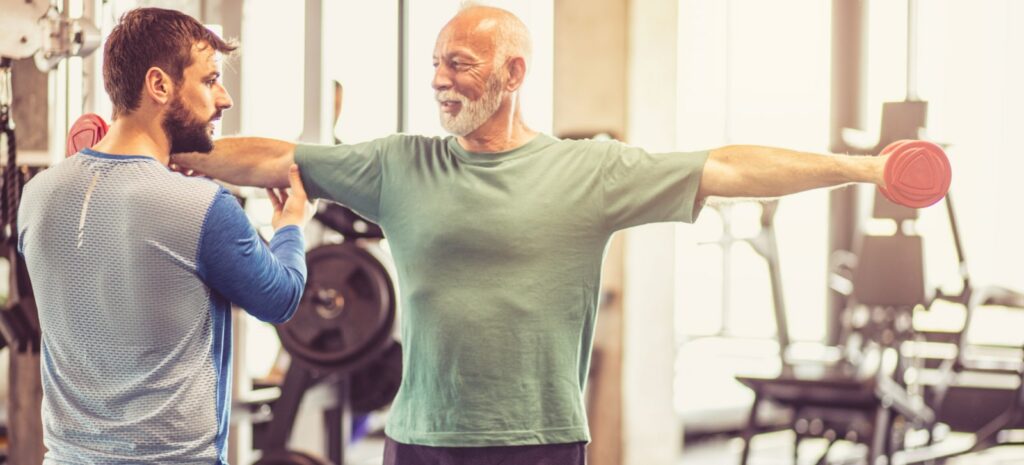Aging Strong
Aging has many effects on physical health, which can impact a senior’s ability to be independent. Adults lose 3% of their muscle mass yearly after middle age. Decreasing muscle strength can increase the risk of falls and injuries.
Although it’s a natural process, there are ways seniors can build muscle. From enriching activities to delicious nutrition, find out why muscle mass matters for healthy aging.
How to Avoid Muscle Loss
There are 2 significant ways seniors can avoid losing muscle mass: nutrition and exercise.
Nutrition is crucial for maintaining multiple health functions, including metabolism, immune system, and muscle maintenance. Some nutrients and minerals that can help build and strengthen muscle tissue include protein, vitamin C, omega-3 fatty acids, and creatine.
Unsurprisingly, regular exercise is one of the most effective ways anyone (at any age) can build muscle. However, some activities can be too challenging or dangerous for seniors. So, whether you’re a beginner or an avid exerciser, it’s important to personalize fitness.
For older adults, the Centers for Disease Control and Prevention (CDC) recommends:
- At least 150 minutes a week of moderate-intensity activities
- At least 2 days a week of muscles-strengthening activities
- At least 3 days a week of balance-enhancing activities
It’s possible for some exercises to quality for all 3 types—moderate-intensity, strengthening muscles, and improving balance.
Of course, seniors should set a pace that benefits their mental, physical, and emotional health. For example, taking a break when necessary, splitting up activities throughout the day, or keeping it fresh with new activity types can help seniors stay motivated.

Strength Training for Seniors
Strength training allows seniors to be more physically independent. Strength training activities can help seniors:
- Build strength
- Maintain bone density
- Improve balance, coordination, & mobility
- Reduce the risk of falling
- Retain independence in performing daily activities
But what types of strength training activities are best for seniors? It depends on individual fitness and comfort level. There are many simple activities seniors can enjoy daily that can maintain muscle mass, from brisk walking to bowling.
Seniors can adapt strengthening exercises to include resistance bands, free-weights, or no weights. Here are a few specific muscle-building exercises seniors can add to their routine:
Chair Squats
Squats with a sturdy chair are an excellent exercise for strengthening hips, thighs, and buttocks. Feet should be shoulder-width apart, and arms extended parallel to the ground. Placing more weight on your heels than the balls of your feet, bend your knees and low yourself onto the chair slowly. Pause, and then slowly stand while keeping your back straight.
With 10 squats per set, complete 3 sets.
Toe Stands
Toe stands strengthen calves and ankles to restore stability and balance. When balance is a concern, seniors should use a sturdy chair or counter for support. Be careful not to lean on your support!
Slowly push up onto the balls of your feet as you count to 4. Hold the position for 2–4 seconds. Then, slowly lower your heels back to the floor as you count to 4. Try completing 3 sets, with 10 toe stands counting as one set.
Biceps Curls
For biceps curls, seniors should select dumbbells they can lift 10 times. Seniors can sit or stand with feet shoulder-width apart. With a dumbbell (weight) in each hand, relax your shoulders and keep your arms close to your sides. Next, bend at the elbow and lift the dumbbells toward the shoulder. Then, slowly lower the dumbbells toward your thighs.
Complete 3 sets of 10 biceps curls.
Wall Push-Ups
Wall push-ups use the same form as traditional push-ups, but seniors face a wall instead of the floor. The movement is easier but helps strengthen the arms, shoulders, and chest muscles. Complete 2 sets of 10 wall-push ups.
Knee Extensions & Curls
More chair-supported exercises to help seniors build leg strength include knee extensions and knee curls. Seniors can add ankle weights to increase resistance (depending on their fitness level).
For knee extensions: Seated in a sturdy chair, slowly raise and lower one leg. Switch between legs (left and right) and complete 10 lifts to complete a set. Then, complete 3 sets.
For knee curls: Stand using a chair for support. Keep your foot flexed, and slowly bring your heel toward your buttocks. Then, lower your foot to the floor. Complete 10 lifts per leg to complete a set. Complete 3 sets with each leg.
Jogging in Place
Jogging or marching in place is an aerobic exercise that can also build muscle. Seniors must maintain good posture and high knees during the exercise. Marching in place slows down the movement, lowering the impact. Increasing the speed increases the impact.
Seniors can start at 10-minute intervals.
Activity Through Community
There are many muscle-strengthening exercises seniors can enjoy. From straightforward exercises to exhilarating hobbies, access to a wide range of independent and community fitness is crucial for motivating healthy lifestyle habits.
At Parsons House Cypress, we want to help our residents celebrate life in their homes and community with engaging and life-enriching activities. Contact us or book a tour to learn more about life in our community!


